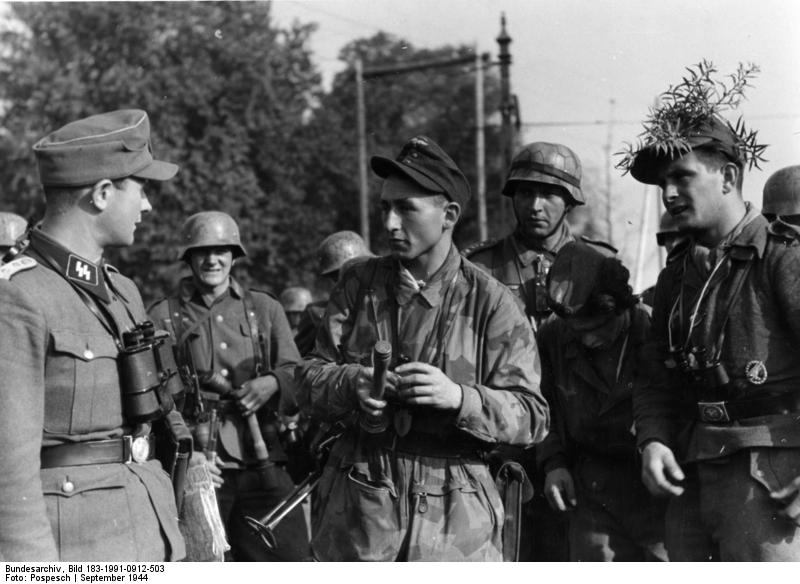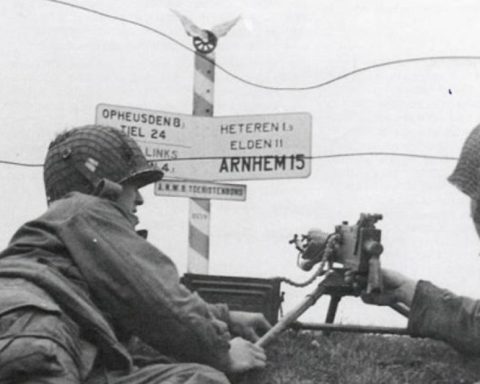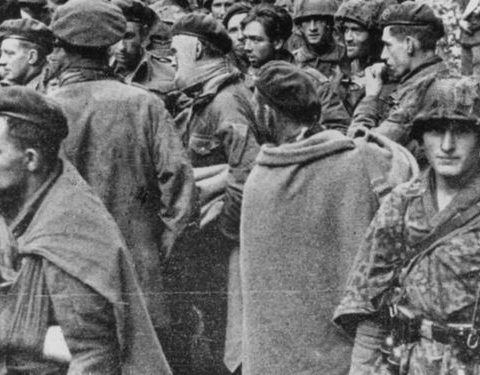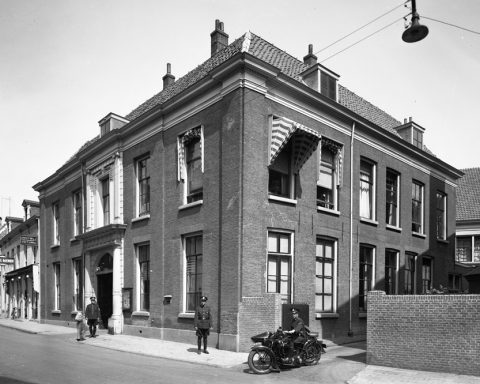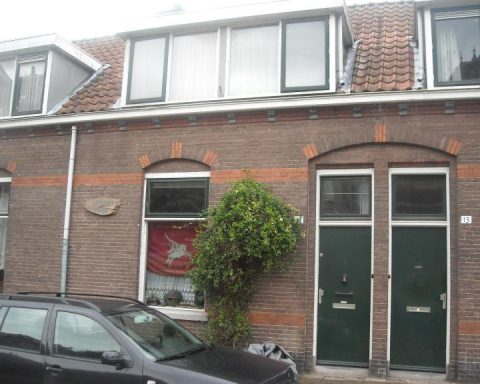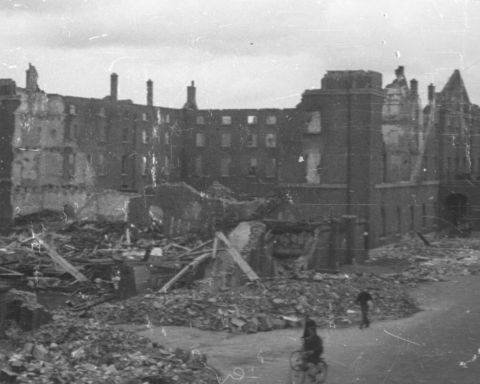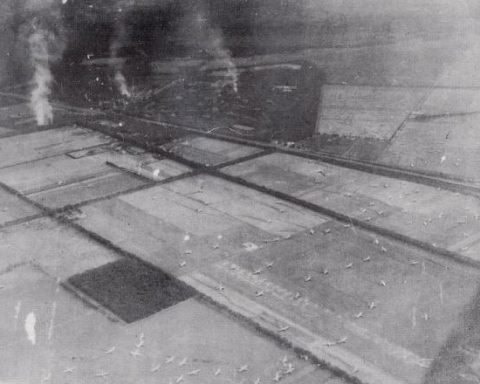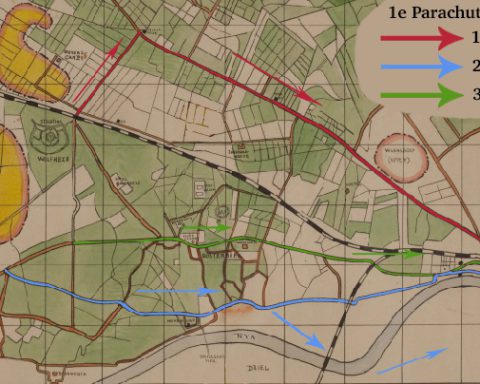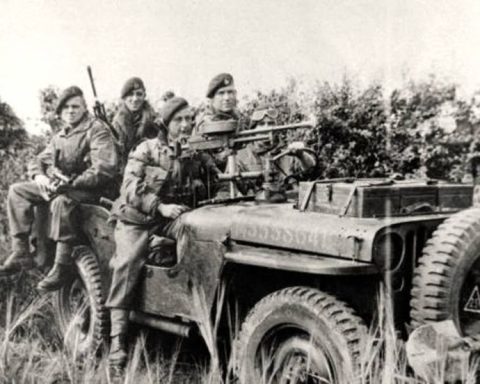Even before the airborne landings at Wolfheze on the first day of Operation Market Garden had properly started, the Germans were already taking countermeasures. Surprise is an important weapon of airborne troops. But at Arnhem there was no surprise at all.
Operation Market Garden started in Arnhem and the surrounding area in the morning. Dozens of British and American bombers bombarded German targets, such as anti-aircraft positions, ammunition depots and barracks. After five years of war experience, the German commanders clearly sensed that the bombings were no coincidence and that something big was about to happen.
So when the first report of enemy airborne landings came in at 1:40 p.m., the Germans responded quickly. The British soldiers who had landed at that time were not yet the main force. The aim of the first paratroopers was to mark the landing areas with markers for the aircraft that followed.
Chaos at headquarters
But the Germans immediately took action. A few kilometers from the landing areas was the headquarters of the German Generalfeldmarschall Walter Model. Model had been given command of Heeresgruppe B a few weeks ago: all German troops between the North Sea coast in the west and Northern France in the east. He had established his headquarters in the Tafelberg hotel in Oosterbeek. His staff camped a little further away in another well-known Oosterbeek hotel: Hartenstein.
Model’s presence was a complete coincidence. The Allies had only been informed of Model’s presence a few days earlier by the Dutch resistance in Oosterbeek.
Immediately after the landings, Model thought that the British paratroopers were coming for him: the highest ranking German soldier for miles around. Only after reports of airborne landings near Eindhoven, Grave and Groesbeek were also reported at Model’s headquarters did Model conclude that the bridges over the rivers should be the target of the landings.
Model hurriedly evacuated his headquarters and drove to General Bittricht in Doetinchem, where the headquarters of the II SS Armored Corps was located. Along the way, Model stopped briefly at City Commander General Kussin in Arnhem with the assignment to find out exactly what was going on.
Battalion Krafft
German Major Josef ‘Sepp’ Krafft was the one who first reported Allied paratroopers at 1:40 PM. Krafft led a Training Battalion of 435 soldiers stationed in Arnhem and Oosterbeek.
Krafft immediately realized two things: the road bridge at Arnhem was the most likely target of the landings and his battalion was at that time the only German force between the landing area and the Rhine bridge.
Krafft immediately ordered his battalion to dig in west of Oosterbeek along the two most likely routes to the city: the Utrechtseweg and the Amsterdamseweg.
9th and 10th SS Armored Division
North and northeast of Arnhem were the remains of two SS armored divisions. The 9th and 10th SS Armored Divisions had suffered heavy blows in the battle in France and had been withdrawn to be reequipped. The two armored divisions together formed the II SS Armored Corps and was led by General Wilhelm Bittrich.
When Bittrich was informed of the airborne landings, he immediately raised the alarm. Standartenführer Harzer, who led the 9th Armored Division ‘Hohenstaufen’, received the message: “Paratroopers have landed near Arnhem. Sound the alarm immediately. Follow orders.”
The commander of the 10th SS Armored Division ‘Fundsberg’, SS-Brigadeführer Harmel, was in Berlin at the time. He was told: “Harmel: come back immediately. Airborne landings in Arnhem sector.”
After Field Marshal Walter Model arrived at Bittrich’s headquarters, something became clearer about the airborne landings. According to Model and Bittrich, it was of the utmost importance that the Allies were stopped at Nijmegen. The Fundsberg division would therefore be sent to Nijmegen, so that the Hohenstaufen in Arnhem could deal with the British.
German speed
Speed was now of the utmost importance and Walter Model, who was known for his talent for improvisation, wasted no time. In the meantime, Model had telephoned Field Marshal Von Rundstedt, the supreme commander of the German armed forces.
Model demanded that all available infantry, flak, tanks and Sturmgeschütze be immediately sent to Arnhem and Nijmegen. Moreover, Model had everyone who could carry a rifle sent to the front.
German officers had a large degree of autonomy during World War II. Unlike the British, for example, they could act at their own discretion without the need for orders from higher up. This position resulted in several German units advancing to Arnhem on their own when they heard of the airborne landings.
An old Prussian saying goes: ‘March to the sound of cannon fire’. With that saying in mind, several units of the 9th SS Armored Division had advanced towards Arnhem.
On the west side of Arnhem, on the first day of the airborne landings, there was a battle group with the name ‘Kampfgruppe Spindler’ in the evening. The battle group was named after Obersturmbannführer Ludwig Spindler, who had marched to Arnhem with his artillery regiment.
In addition to units of the 9th SS Armored Division, this ‘Kampfgruppe’ also included soldiers of the Luftwaffe who were stationed at Deelen air base, a few kilometers north of Arnhem. Sepp Krafft’s battalion was also incorporated into Spindler’s defense line that evening.
Kampfgruppe Spindler formed a strong defense line from the Rhine in the south to beyond the Amsterdamseweg in the north. Spindler also had access to various pieces of mechanical artillery and armored cars.
Germans from the west
German troops were also sent in the direction of Arnhem from the west of the British landing zones. German General Hans von Tettau had been given the task earlier in September 1944 to receive the German troops who had escaped from Normandy, often without weapons.
Von Tettau had quartered the soldiers north of the Rhine and forged them into new units. In the afternoon of September 17, 1944, Von Tettau was ordered by SS-Obergruppenführer Hanns Rauter to advance to Arnhem with his soldiers. A Dutch battalion with SS volunteers was also ordered to move to Arnhem.
In short: even before the British had properly left the landing areas at Wolfheze, many German units were also on their way to Arnhem. Soon there were more German than British soldiers in the Arnhem region…

